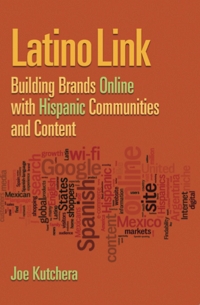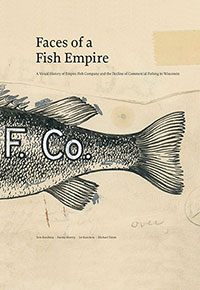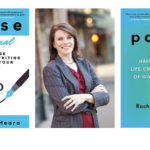Mercedes López Arratia, Customer Experience Head and Digital CMO at Banamex, wrote this case study with my co-author, Alonso Fernandez, and was then translated by Madalena Sánchez Zampaulo of Accessible Translation Solutions. It originally appeared in my new book in Spanish, E-X-I-T-O: Su estrategia de marketing digital en 5 pasos (E-X-I-T-O: Your Digital Marketing Strategy in 5 Steps).
INTRODUCTION
On April 19, 2012, the President of Mexico, Felipe Calderón and the general directors of América Móvil, Banamex and Inbursa announced the launch of Transfer, a service that allows mobile payments, transfers from cell phone to cell phone, balance inquiries and withdrawals at ATMs without a card. The innovative product works through SMS text messages and is available 24 hours a day, 7 days a week. Above all, Transfer allows greater involvement in financial services in Mexico, as it provides the opportunity to 66 million people, who already have a cell telephone, to be able to access financial services and carry out banking transactions, taking advantage of Telcel coverage in 185 thousand locations in the country and the infrastructure and support of banking institutions of the size and prestige of Banamex and Inbursa. For a country, this means that expanding the contributor base offers possibilities of financial education and inclusion to families who did not have it before, reduces the cost of production of cash for the country, and it is the first step in accessing credits and other transformational financial products.
In other words, Transfer is a pioneer product in a Mexican financial industry that experiments with making products simpler and in accordance with people’s needs. The product’s potential lies in the fact that it solves what Guillermo Babatz, Chair of the Comisión Nacional Bancaria y de Valores (CNBV) [National Banking and Securities Commission] calls the greatest obstacle of the country’s financial industry: “that traditional products and services are not useful to the majority of the population because they were not designed for this population.”
THE CIRCUMSTANCE
Through a research and testing process, América Móvil, Banamex and Inbursa developed Transfer, a product that implicates changes to Mexican legislation and to systems used for banking transactions and cell phone usage. It is a product born from consumer habits and their relationship to mobile devices through a development process completely contrary to the traditional model of financial institutions, which normally create a product according to their own interests and later instruct the market about how to use it. The communication and marketing strategy, therefore, followed the same process for its launch and required extensive research and testing in order to make Transfer a success.
Now, the challenges that the development of a marketing strategy present for the launch of a product are always great. However, when it is for an innovative product, which offers something that does not exist on the market, for which expectations are so high and in which so many are involved, the challenges increase exponentially.
THE CHALLENGE
When Mercedes López Arratia, Head of Digital Marketing of Grupo Financiero Banamex [Banamex Financial Group], started planning the marketing strategy, she was faced with many of these challenges. Among these, was assigning communication of the product to a segment of the population that had never used financial services, the coordination of three independent businesses in the creation of messages, combining campaigns throughout multiple means of communication, establishing contact with the client by e-mail and cell phone only and competing with a payment method with more than 200 years of popular use: cash money.
REACHING “Early Adopters”
In order to face these challenges in the first stage of the campaign, the Banamex marketing team focused on making an impact on non-banking, young Mexicans, 18 to 30 years of age as “Early Adopters”: those individuals who accept novelties during the first moments of their release. This way, education surrounding the product would be less complicated and the adoption curve more accelerated. Furthermore, “early adopters” are generally a reference within social circles and they influence the buying decisions of their friends and relatives.
Thus, the Banamex team concentrated on preparing its strategy for the way this audience accesses services, in such a way that their adoption of the product would occur in the most natural way possible. For them, mobile devices are a basic daily tool and even an extension of their private lives. They all know how to use SMS and surf the Internet, in spite of having never received formal instruction on the use of computers.
The campaign was initially launched only in Mexico, but the worldwide reach that Banamex and América Móvil have allow for the service and the communication strategy that accompanies it to be exported with relative ease. At this time, Latin America is the market with the highest potential for Transfer, and plans to launch it throughout the region are already underway. In addition, one of the most attractive markets is the United States, or at least, the immigrant community in the United States who send transfers to their relatives in their native countries. In Mexico, for example, this activity is the country’s second source of foreign currency. Currently, these expatriates depend on companies to send money that charge high rates to the senders. Banamex Transfer offers a banking alternative that is effective, easy to use, and that, currently, is of no cost to its users.
Marketing Plan
With its clearly segmented audience, Banamex implemented a 360o marketing strategy, which integrates television, radio, external media and digital media through channels with national and local reach. In terms of size, this campaign is the second largest and most important from Banamex, one of the most important advertisers in the country, and it is active all year long. This plan is based on market studies that Banamex developed for two years prior to the product’s launch. In these studies, they were able to locate the main differentiators and benefits that the public perceived, and this led them to define its key communication messages: speed, ease and security. Based on these same studies, they defined communication platforms, as well as the roll that each of them would play in the strategy:
- Awareness: Produce awareness of the service’s presence and its offer. This is the first step.
- Education: Report its benefits, its operation and ease of use.
- Conversion: Account activation, use of the platform and make recommendations
- Retention: Increase frequency of use and utilization of all of the service’s modalities (balance inquiry, transfer, withdrawal, deposit, etc.)
Digital Advertising
All media have contributed in one way or another to all of the campaign’s goals, but digital media had a special effect on educating and converting the consumer. For example, in education the Internet is the medium from which more resources are made available to inform potential clients. It allows the inclusion of didactic content in a variety of easy and practical formats, like video, graphics, infographics or frequently asked questions, and it is the only way that allows the consumer to delve into the benefits that Transfer offers on her/his own time. Given the mobile and digital nature of the product, the conversion happens via computer or cell phone. Therefore, digital became the client’s natural point of conversion, outperforming the traditional bank branch.
“Word of Mouth” Advertising
Nevertheless, Banamex did not solely use these channels to diffuse Transfer. It went even further with a viral experiment that has worked to expand its reach and obtain new clients. As with all categories, recommendations from friends and relatives (“word of mouth” advertising) are a very influential factor in the decision to buy. When someone reliable speaks positively about a service and even recommends using it, the perception of this service improves and influences whether it is used or not. With this insight in mind, Banamex launched a promotion that gives rewards when the user succeeds in getting her/his acquaintances to open a Transfer account. It works simply: for each person that a client invites who ends up opening a Transfer account, the client who sent the invitation will be paid $20.00 pesos. This promotion offers a real incentive to all clients who promote the service in their circles. In addition, it provides capital to the client so that s/he can experiment with new banking services that Transfer offers (transfers, withdrawals, payments, etc.) without feeling that s/he is putting her/his own money at risk on a new and intangible platform. This strategy was successfully spread via Facebook through an app that allows users to measure the amount that they would receive by getting their friends to open an account. Facebook has allowed them to increase the reach of their campaign through a viral strategy that motivates users to share, invite, comment and replicate this cycle, time and again. The promotion was a success and it accelerated the rhythm of acquisition in an important way. For Banamex, it is an investment that will bring it much greater benefits in the long term and that helps its clients to confirm that the service operates without having to risk anything. Mercedes López rightly compared it to free samples that are offered in supermarkets and that allow the consumer to decide if a product satisfies their needs and if it is worth purchasing.
A/B Testing
Throughout the campaign, a detailed follow-up of the efficiency of each media and message to reach the goals was carried out. By way of the scoring model developed by Banamex and the implementation of an A/B Testing method, Mercedes López’s team was able to what advertising copy worked best, what “Subject Line” in e-mails was most effective, what obstacles prevent users from opening an account and what benefits convince them to open it. This follow-up method constantly allowed them to experiment with new interfaces, designs, messages and channels, and along the way, it provided sufficient knowledge to identify the combination of factors that produced the greatest yield to the campaign’s goals.
Internally at Banamex, the success of Transfer has made executives at all levels see the importance of mobile devices and the value that creating products that adapt to the lifestyle and habits of its clients offers. Money and mobile devices are often the only thing a person carries in her/his pockets and to develop a product that combines both things not only accelerates the adoption of banking services, but also has had the power to produce a distinct sensitivity toward the consumer within the organization. Today, there is no way to undervalue the impact that the use of mobile technology and digital media have on the bank’s business goals. Added to this is the ease of the product’s activation and by not being limited to Banamex clients, it is a safely usable product, open to anyone.
RESULTS
So far, Transfer has met Banamex’s expectations. Its potential to bring banking to the population has been proven and it is expected to continue impacting other sectors of the national economy. The medium-term approach is that small and large businesses use it to receive and issue payments from or two clients and partners, that the government use it to make payments in remote regions of the country and that it be a method for distributing state subsidies without the need to use cash. Currently, Mercedes López and other people from the Banamex team are surprised when a carpenter or taxi driver asks them if “they can send a Transfer” to pay for their services, but without a doubt, it is an indicator that the marketing strategy has been a success and that the product has accommodated the needs of the non-banking population. It is expected that Transfer will be the banking platform that is adapted to the lifestyle of most people and that it has universality to make financial services easier for everyone.
Advice for Innovators
Mercedes López offers the following advice to other executives and entrepreneurs who are facing the challenge of launching an innovative product: “It is essential to carry out market research that will facilitate making decisions, but above all, you have to test, test and test and then measure, measure and measure.” This focus on testing and measuring results has allowed Banamex to speed up its decision-making substantially. This is an achievement that is not easy in an international financial institution the size of Banamex. Above all, this practice has allowed them to repeat their campaigns and optimize communication on the fly. This way, they do not lose time in launching and the final result is always the most effective version of their strategy. Moreover, Mercedes recommends always following the maxim of organizational communication and maintaining open channels among representatives and emphasizing the importance and role that they play in making decisions. This has been especially useful in the case of Banamex in which there are so many representatives from different companies, and each of them has incredibly valuable contributions to the goal they share. It is necessary to realize that all of your partners contribute a lot to the business and by working together, each one is more effective than any of the parts alone.
This case study originally appeared on Entrepreneur.com in Spanish and was reviewed on Euromonitor’s blog: Banamex Leverages Digital Channel to Reach Unbanked.








